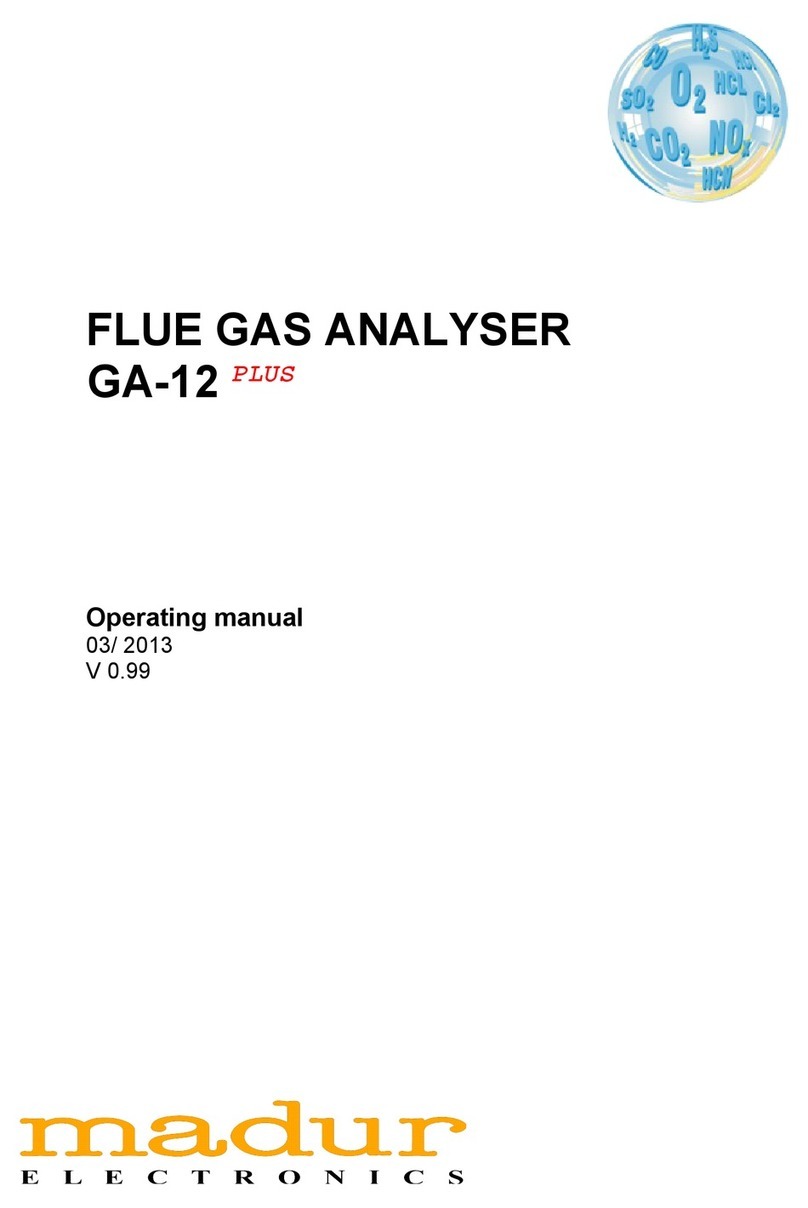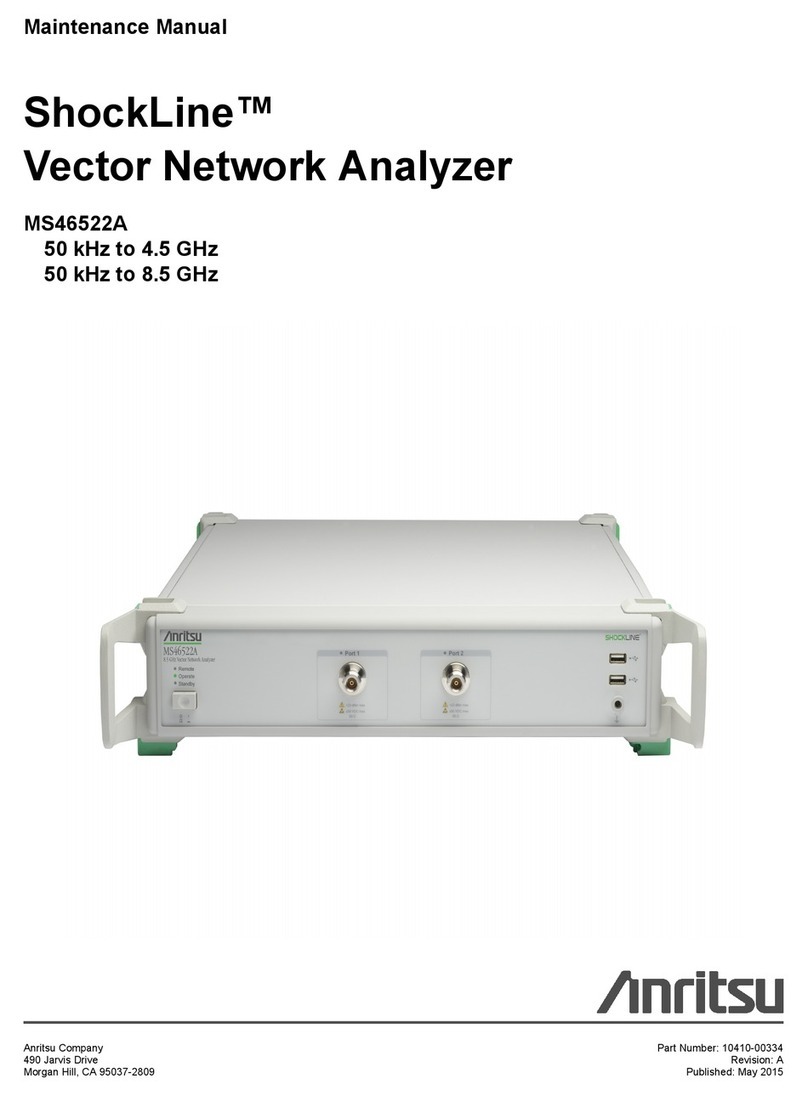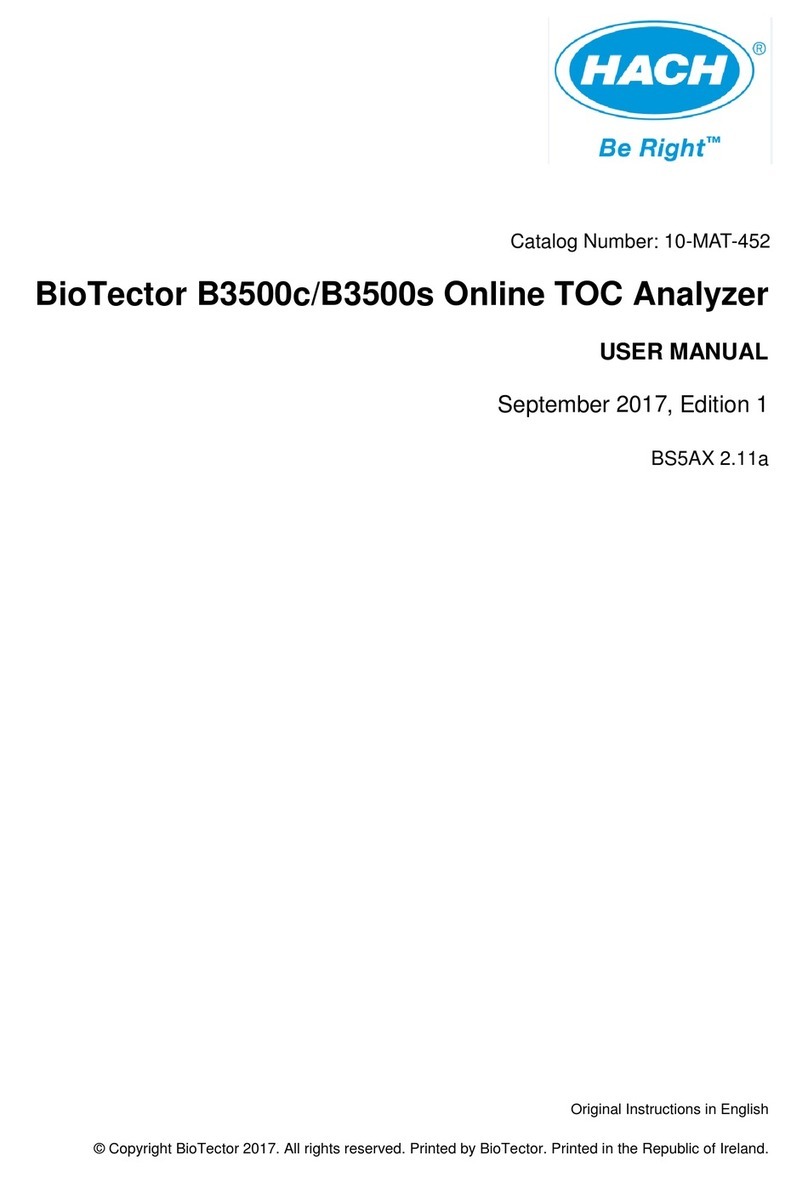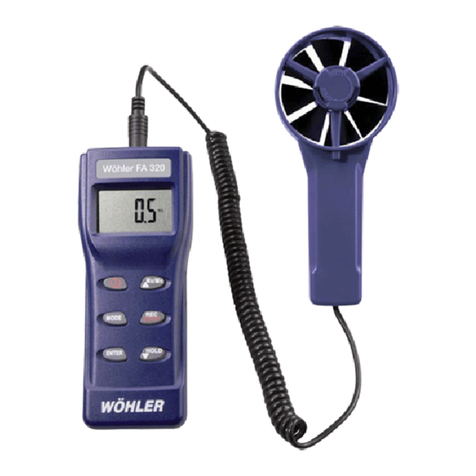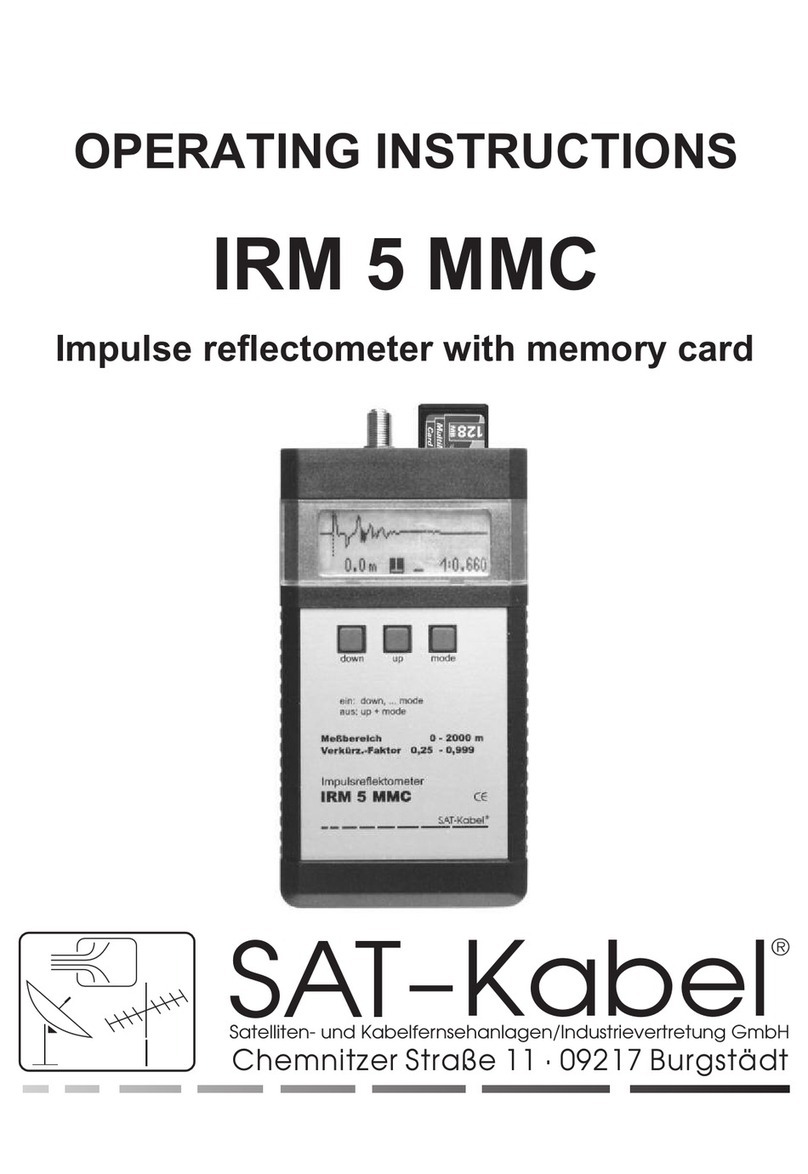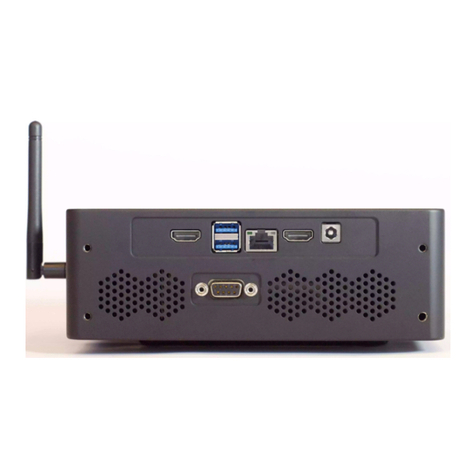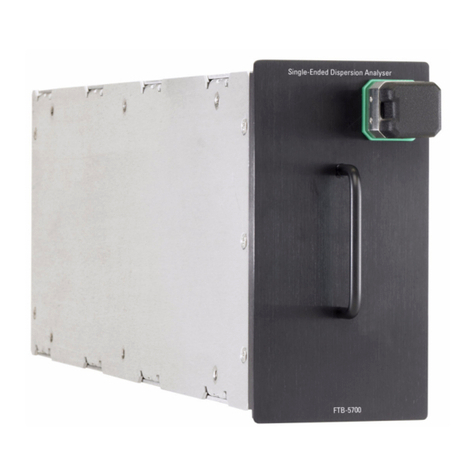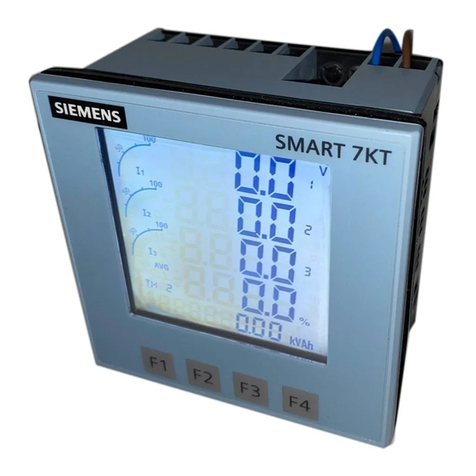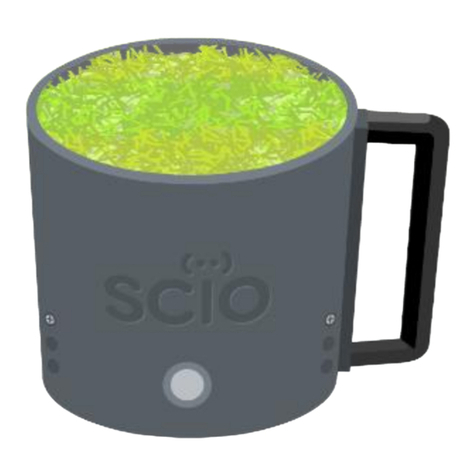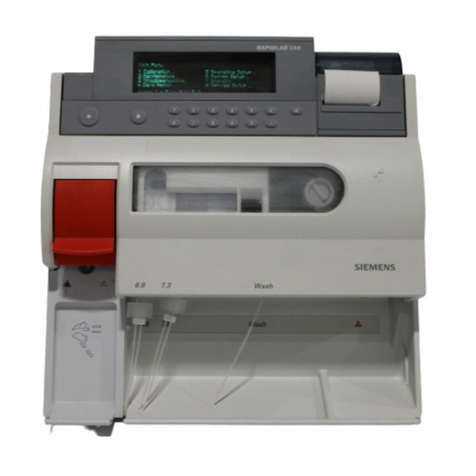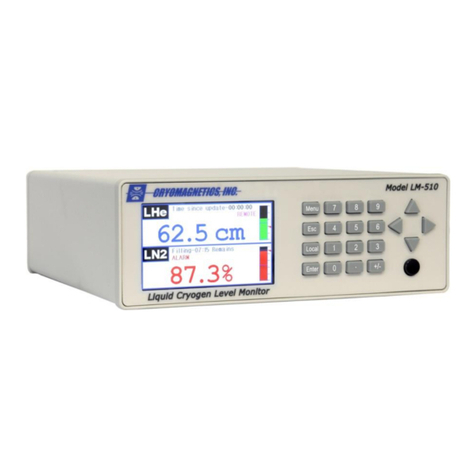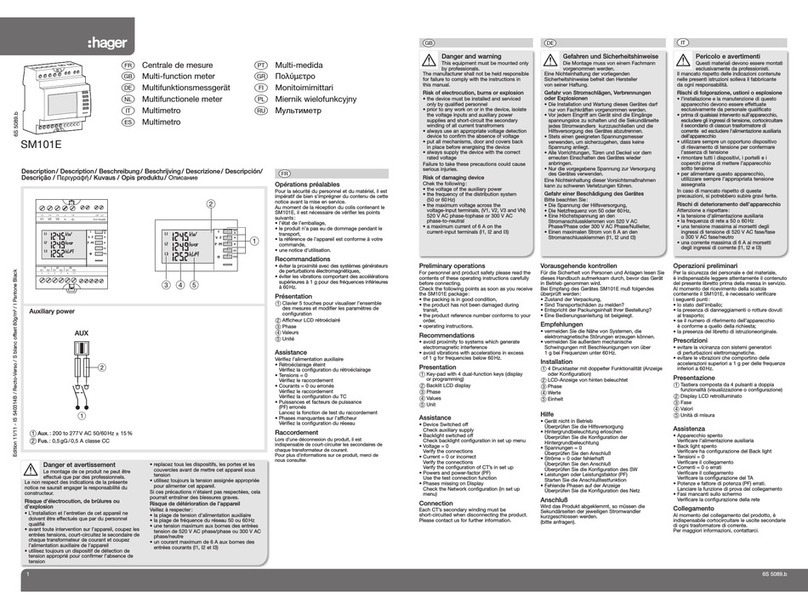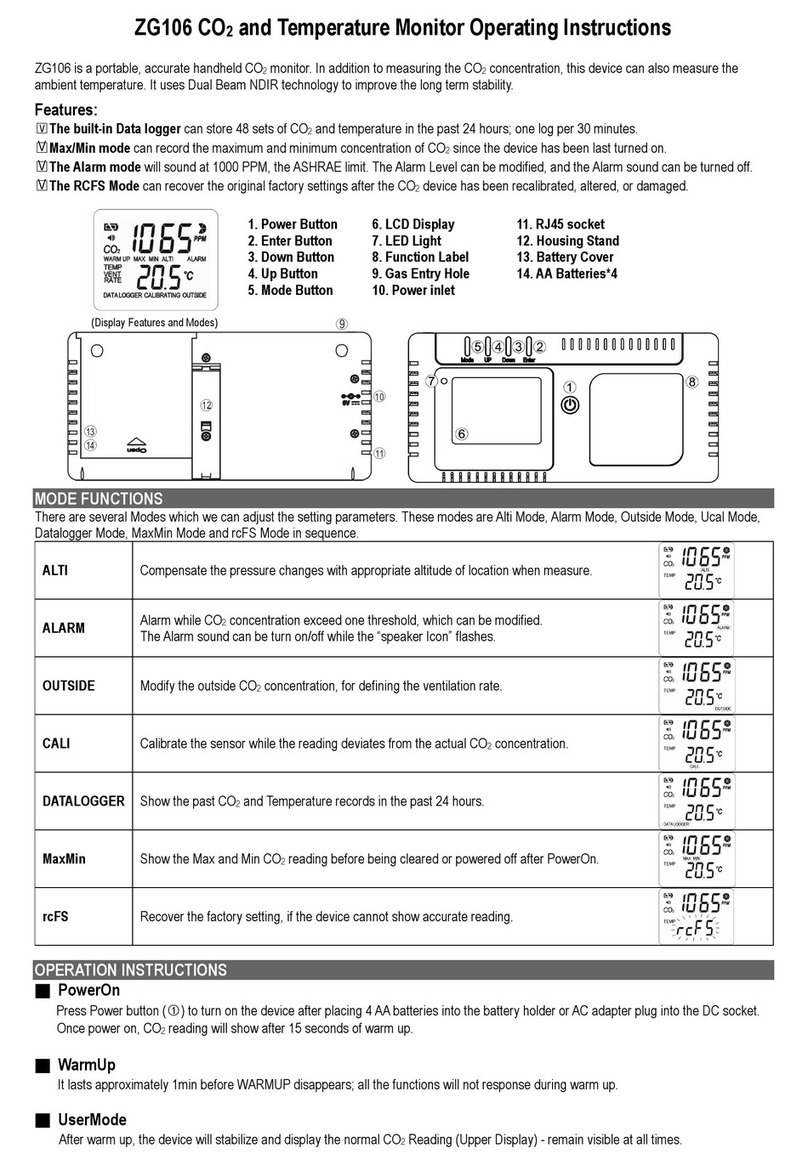Madur GA-21 Plus User manual

FLUE GAS ANALYSER
GA-21 plus
Operating manual
Version: 2.1
06/2017

www.madur.com Manual GA-21Plus
Index
1. Introduction................................................................................................................................................4
1.1. Use of this operating manual..............................................................................................................4
2. Maintenance...............................................................................................................................................5
2.1. Gas sensors........................................................................................................................................5
2.2. Gas system.........................................................................................................................................5
2.3. Battery.................................................................................................................................................5
2.4. Service intervals..................................................................................................................................6
2.5. Errors during operation.......................................................................................................................6
2.6. Switching off after use.........................................................................................................................6
3. General information..................................................................................................................................7
4. Construction..............................................................................................................................................9
4.1. Elements of gas circuit........................................................................................................................9
4.1.1. Gas probe with in-line filter.........................................................................................................9
4.1.2. Gas pump..................................................................................................................................10
4.1.3. Gas chamber.............................................................................................................................10
4.2. Measurement system........................................................................................................................10
4.2.1. Gas sensors..............................................................................................................................10
4.2.2. Ambient temperature sensor.....................................................................................................12
4.2.3. Flue gas temperature sensor....................................................................................................12
4.2.4. Gas chamber temperature sensor............................................................................................12
4.2.5. Differential pressure sensor......................................................................................................12
4.2.6. Analogue inputs.........................................................................................................................12
4.3. Data input/output system..................................................................................................................14
4.3.1. Keyboard...................................................................................................................................14
4.3.2. Display.......................................................................................................................................16
4.3.3. Printer........................................................................................................................................16
4.3.4. Interface RS232C......................................................................................................................16
4.3.5. Power supply.............................................................................................................................17
5. Operation..................................................................................................................................................18
5.1. Use of the keyboard..........................................................................................................................18
5.1.1. Description of the keys..............................................................................................................18
5.1.2. Selecting menu options.............................................................................................................19
5.1.3. Entering numbers......................................................................................................................20
5.1.4. Editing text................................................................................................................................20
5.2. Basic operating instructions..............................................................................................................21
5.2.1. Setting-up the analyser.............................................................................................................21
5.2.2. Switching on..............................................................................................................................21
5.2.3. Switching off / standby..............................................................................................................21
5.2.4. Initial calibration........................................................................................................................23
5.2.5. Measurement parameters.........................................................................................................24
5.2.5.1. Fuel selection......................................................................................................................25
5.2.5.2. Averaging time....................................................................................................................27
5.2.5.3. Reference oxygen parameters (O2R)................................................................................27
5.2.5.4. Boiler parameters...............................................................................................................28
5.3. Displaying the measurement results.................................................................................................29
5.3.1. Current values...........................................................................................................................29
5.3.2. Averaged values........................................................................................................................30
5.3.3. The averaging process..............................................................................................................31
5.4. Pressure/Draft measurements..........................................................................................................32
5.5. Soot (smoke) Measurement..............................................................................................................33
5.6. Options..............................................................................................................................................34
5.6.1. Device info................................................................................................................................35
5.6.2. Sensors.....................................................................................................................................36
5.6.2.1. Sensor CO (only in dual CO sensor configuration)............................................................36
5.6.2.2. CO range............................................................................................................................37
2

www.madur.com Manual GA-21Plus
5.6.2.3. O2 cell calibration...............................................................................................................37
5.6.2.4. External channels...............................................................................................................38
5.6.2.5. Sensor calibration...............................................................................................................40
5.6.2.6. Calibration adjustment........................................................................................................42
5.6.3. Settings.....................................................................................................................................43
5.6.3.1. Backlighting.........................................................................................................................43
5.6.3.2. Contrast..............................................................................................................................43
5.6.3.3. Clock...................................................................................................................................45
5.6.3.4. Printer.................................................................................................................................46
5.6.3.5. Language/Country..............................................................................................................47
5.6.3.6. Acoustic warning.................................................................................................................47
5.6.3.7. Soot (1/3)............................................................................................................................47
5.6.3.8. Standard.............................................................................................................................47
5.6.4. Control list.................................................................................................................................48
5.6.5. madur Service...........................................................................................................................48
5.7. Storing of results...............................................................................................................................49
5.7.1. Storing measurement reports...................................................................................................50
5.7.1.1. Report table........................................................................................................................51
5.7.1.2. Header (Notice) editing.......................................................................................................53
5.7.1.3. Erasing reports...................................................................................................................54
5.7.2. Continuous storing of results....................................................................................................54
5.7.2.1. Banks table.........................................................................................................................56
5.7.2.2. Erasing banks.....................................................................................................................56
5.7.3. Data-logger...............................................................................................................................57
5.8. Triple XL test......................................................................................................................................57
5.9. Printer................................................................................................................................................59
5.9.1. Printing the contents of a screen..............................................................................................59
5.9.2. Printing of all results..................................................................................................................59
6. Gas block diagram..................................................................................................................................61
7. Menu structure.........................................................................................................................................62
7.1. Structure of the main menu...............................................................................................................62
7.2. Structure of the menu STORE..........................................................................................................63
3

www.madur.com Manual GA-21Plus
1. INTRODUCTION
Congratulations on your purchase of the microprocessor-controlled flue gas ana-
lyser
GA-21 plus
It is a high quality instrument produced using the latest technical discoveries. The
GA-21 plus is easy to use. You also have the possibility of using the extra capabilities of
this analyser, of examining measurement results, checking service intervals and many
others. Please read the operating manual carefully. It contains valuable tips and informa-
tion for problem-free operation. Regular maintenance will help to keep your analyser
ready for use at all times.
1.1. Use of this operating manual
Keep this manual with the analyser GA-21 plus, and take it with you when carry-
ing out measurements. Here is a short description of the sections of this manual.
2. Maintenance
This section contains important information designed to keep your analyser work-
ing and to save you time and trouble.
3. General information
This describes the most important characteristics of your new analyser.
4. Construction
A knowledge of the hardware of the analyser will help you to use the instrument
correctly and to avoid unnecessary down-time.
5. Operation
This section explains the use of the analyser with detailed descriptions of the vari-
ous functions. It is important to read the sections 5.1 and 5.2 first. The other sections can
be read when required.
4

www.madur.com Manual GA-21Plus
2. MAINTENANCE
2.1. Gas sensors
The following points are important for maximising the operational life of the cells
and achieving measurements without errors:
do not exceed the rated concentration;
all the gas cells may react unpredictably to the presence of substances which are
not usually found in flue gases. For this reason, the analyser may not be cleaned
with chemical solvents. If organic solvents enter the gas chamber, the cells may
become unstable or even suffer permanent damage;
some cells require the presence of a bias voltage when not in use. Do not allow
the battery to become fully discharged;
do not switch the analyser off before the system is purged of remaining flue gas;
store the analyser in a cool place to reduce the ageing of the cells.
2.2. Gas system
The gas system of the analyser is protected by a double in-line filter. The ele-
ments should be changed when necessary. Check the condensate traps regularly and
empty them when needed.
2.3. Battery
The rechargeable battery used in the analyser is maintenance-free. An acoustic
warning signal is given when the voltage drops below 11 V. The GA-21 plus will switch off
automatically if the voltage should drop below 10.5 V. The analyser will operate for about
5 hours from the battery.
Warning:
Some parts of the analyser draw current even when the device is
switched off. If the analyser is not being used then the battery
should be charged fully at least once a month.
5

www.madur.com Manual GA-21Plus
2.4. Service intervals
The parameters of the electrochemical cells change with time, and therefore it is
necessary to carry out a service periodically. This service should include re-calibration of
the gas sensors using test gases. The recommended service interval is 800 operating
hours or 6 months, whichever comes first. The analyser is fitted with an operating hour
counter and automatically shows when a service is necessary.
The operating time and the number of hours until the next service are shown in
MENU->OPTIONS->madur SERVICE -> DEVICE INFO .
2.5. Errors during operation
The analyser checks all circuitry continuously. Should an error become evident,
then this is signalled acoustically and by the message "ERROR" on the screen. The error
can be found shown on the screen MENU->OP TIONS ->madur S ERVICE -> CONTROL
LIS T .
2.6. Switching off after use
The operating life of the electrochemical cells is dependent on the usage of the
instrument. The wear and tear on the cells is greater when the cell is exposed to the gas
for longer or the concentration is higher. The gas cell is hence "used up" during measure-
ments.
Info:
For this reason, the analyser should not be switched off until all the
gas tubing has been completely cleared of flue gases and the gas
cells have been purged with fresh air for several minutes.
The GA-21 plus will not normally allow the instrument to be switched off if there
are still traces of flue gas in the system. The analyser will continue to operate until the sig-
nals from the gas cells are nearly zero. This activity is shown by the message "VENTILA-
TION REMOVE PROBE FROM FLUE".
The [OFF] key must be pressed twice to switch the instrument off completely.
Pressing the key once will put the analyser in the standby mode and the instrument will
remain in this mode until it is activated again by pressing "C" or switched off completely.
6

www.madur.com Manual GA-21Plus
Warning:
Certain conditions, such as strong electro-magnetic fields can
cause the analyser to become "hung-up". The only solution to this
problem is to switch the instrument off. It is, however, possible
that the analyser will no longer react to the keyboard and can not
be switched off.
Info:
Pressing the [OFF] key for a period of about three seconds will always
switch the analyser off.
3. GENERAL INFORMATION
The GA-21 plus is a multi-functional flue gas analyser. Electrochemical sensors
are used for the measurement of gas concentration. The instrument can be fitted with
between 2 and 4 of these sensors. All analysers are fitted with O2 and CO sensors, fur-
ther gas cells must be chosen when the instrument is ordered.
The following description is based on an analyser containing 3 cells, the third one
being an NO sensor.
Oxygen, O2
Carbon monoxide CO
Nitric oxide NO
Carbon dioxide CO2
Nitrogen oxides NOx
The first three gases (O2, CO, NO) are measured directly using the electrochem-
ical cells. The remaining components are calculated. The concentrations of oxygen and
carbon dioxide are shown in percent. The concentrations of the remaining gases are
shown as follows:
volume concentration in [ppm]
absolute mass concentration in [mg/m3]
mass concentration relative to the oxygen content in [mg/m3]
In addition, the air inlet or ambient temperature and flue gas temperature are
measured. Using the measured temperatures, gas concentrations and the known fuel
7

www.madur.com Manual GA-21Plus
parameters the analyser calculates a variety of combustion parameters such as Stack
Loss – SL, Efficiency - , Excess Air - , Loss through Incomplete Combustion – IL.
The GA-21 plus also measures differential pressure.. This can be used to meas-
ure the draught or pressure in the flue gas channel. The instrument is also equipped for
the soot test according to Bacharach method.
The analyser is also fitted as a 3 channel data logger, capable of measuring
voltage or current together with temperature using thermocouples or thermistors.
The instrument can be used at a broad range of ambient temperatures (0 - 50°C).
It is fitted with a rechargeable battery making it independent of the mains power supply.
Hence, the GA-21 plus is ideally suited for all those involved in the construction,
maintenance and adjusting of heating systems.
The keyboard of the instrument can be wiped clean if necessary.
The GA-21 plus is controlled by a microprocessor. The easy-to-read LCD dis-
play, the comprehensive keyboard and the built-in printer allow the operator to communic-
ate with the instrument easily and to document the measurements on the spot. The EEP-
ROM memory used in the GA-21 plus allows large quantities of data to be stored without
fear of data loss should the instrument be switched off or should the battery be accident-
ally run down. The GA-21 plus comes complete with programmed data for the 18 most
common fuels. A further 10 fuels can be programmed by the operator to cover all eventu-
alities.
The RS232C interface fitted to the GA-21 plus allows all stored data to be read
for later treatment or the instrument can be used on-line with the computer.
8

www.madur.com Manual GA-21Plus
4. CONSTRUCTION
4.1. Elements of gas circuit
4.1.1. Gas probe with in-line filter
The gas probe is used to extract the gas under investigation and to measure its
temperature. The gas probe consists of two parts, the probe pipe with thermocouple (1)
and the probe holder (2).
Picture 1. Gas probe with hose and in-line filter
The probe pipe is typically supplies in one of four standard lengths: 150 mm, 300
mm, 450mm, 750 mm, 1000mm and 1500 mm. As standard a Ni-CrNi thermocouple is
used. The probe pipe is fitted with an anchor cone to simplify fixation in the flue gas chan-
nel.
The probe pipe is attached to the probe holder with a threaded connector.
The gas tubing in the GA-21 plus is protected from the dust and moisture present
in the flue gases by a filter (4). The filter elements (3) should be changed when dirty to
ensure a free flow of gas. The condensate should be removed from the condensate traps
when necessary.
9

www.madur.com Manual GA-21Plus
The plug (6) and hose quick coupler (7) are connected to the front plate of the
analyser.
4.1.2. Gas pump
The internal gas pump draws the gas into the GA-21 plus and passes it through
the gas chambers. The self-cleaning pump is a high quality item and is known to be ex-
tremely reliable.
The gas cells operate best with a flow rate of 90 l/h, which is set at the factory
and is compensated automatically for flow restrictions or changes in battery voltage.
4.1.3. Gas chamber
The gas chamber can be fitted with minimum two and maximum six gas sensors.
Oxygen and carbon monoxide cells are standard equipment. The other sensors are
chosen when the instrument is ordered. The gas chamber of the GA-21 plus system is
characterised by minimal dead capacity, which leads to low inertia of the analyser indica-
tions. In addition to the gas sensors, there is a temperature sensor placed in the chamber
for temperature compensation of the sensors.
4.2. Measurement system
4.2.1. Gas sensors
The oxygen concentration is measured using an electrochemical cell. The sensor
signal is directly proportional to the oxygen volume concentration. The oxygen sensor
needs no calibration with standard gases – it is fully calibrated during the initial calibration
when a point corresponding with the contents of oxygen in clean air (20.95%) is determ-
ined.
10

www.madur.com Manual GA-21Plus
The toxic gases are also measured using electrochemical cells.
Table 1 presents all standard gas sensors available in GA-21 plus system.
Gas Cell type Range
O2 5FO 0-20.95 %
O2 MOX-1 0-100 %
CO 5F 0-20000 ppm
CO 5MF 0-10 %
CO A5F 2000 ppm
NO 5NF 0-5000 ppm
NO2 5ND 0-1000 ppm
SO2 5SF/F 0-5000 ppm
H2S 3HL/M 0-1000 ppm
H2 3HYT 0-2000 ppm
CL2 3CLH 0-250 ppm
HCl 3HL(s) 0-100 ppm
Table 1 Available gas cells and ranges
To guarantee long-lasting, trouble-free function of electrochemical sensors the fol-
lowing points are important:
the stated maximum measuring range of the sensor should not be ex-
ceeded.
all of the gas sensors can react unpredictably to certain chemicals
which are not typical for combustion gas composition. For this
reason, it is absolutely forbidden to wash the parts of the gas line with
chemical solvents. The vapours from such solvents can get inside the
gas chamber and result in destabilisation or even permanent damage
of the gas sensors.
the gas sensors are working even when the analyser is switched off -
so the battery should never be disconnected or completely dis-
charged.
the analyser should not be switched off before all the flue gases have
been removed from the analyser's gas circuit.
the sensor chamber must be kept dry.
the switched off analyser should be kept in a cool place, which in-
creases the lifetime of the gas sensors.
11

www.madur.com Manual GA-21Plus
4.2.2. Ambient temperature sensor
The ambient temperature is measured by the analyser for use in some of the cal-
culations carried out, such as Stack Loss. This can be carried out either by the temperat-
ure compensation sensor built into the plug of the probe holder (INT) or the external con-
nector T3 (EXT). The temperature sensor is chosen under the suboption:
OPTIONS → SENSORS → ANALOGUE INPUTS.
4.2.3. Flue gas temperature sensor
The flue gas temperature sensor is situated in the gas probe pipe and plugged
into the PROBE socket on the front panel of the analyser. This sensor is a NiCr-Ni ther-
mocouple in the standard probe version. The range of such a thermocouple is 50-800oC
in the standard version (1100°C available optionally). A special gas probe with PtRh-Pt
thermocouple can also be used, with a range up to 1600oC. Proper flue gas temperature
measurement is the most important factor for correct calculation of the chimney loss and
other heat engineering results.
4.2.4. Gas chamber temperature sensor
To compensate for temperature drift of the gas cells, the temperature of the gas
chamber is constantly monitored.
4.2.5. Differential pressure sensor
The GA-21 plus is fitted with a precise semiconductor differential pressure
sensor. Stubs marked +/- PRESSURE situated on the left side of the front panel are used
to measure pressure. Negative pressure in flue gas channel (chimney draught) can be
measured with the one stub only; differential pressure measurement is possible using
both stubs. The measuring range of the pressure sensor is +/- 25 hPa.
4.2.6. Analogue inputs
The three analogue inputs installed can be used to measure voltage or current on
two channels (U and I), temperature using a thermocouple (T1 EXT) and temperature us-
ing a thermistor (T3 EXT). The values measured can be viewed on the screen or stored in
the EEPROM memory.
12

www.madur.com Manual GA-21Plus
Current and voltage inputs – top view (outputs - optional)
1 – GND
2 – I1 in
3 – U1 in
4 – I1 out GND (optional)
5 – I1 out (0/4-20mA, optional)
Parameter U I
Range -10V to +10V -10mA to +10mA
Input resistance 100kΩ 100Ω
Resolution 10mV 10µA
Temperature input – top view
1 – PT3 (Thermistor 1 +)
2 – TH1 (Thermocouple 1 +)
3 – GND (-)
13

www.madur.com Manual GA-21Plus
Parameter Thermocouple Thermistor
Range Ni-CrNi: 1 – 1300°C
Pt-RhPt: 0 – 1600°C
Fe-CuNi: 0 – 700°C
Pt100: 0 – 200°C
Pt500: 0 – 500°C
Resolution 1°C 1°C
4.3. Data input/output system
4.3.1. Keyboard
A film keyboard is used in the GA-21 plus analyser which is durable, washable
and highly resistant to external agents. The keys are modern membrane keys with per-
ceptible stroke.
Each press of a key is accompanied by an acoustic signal. The keyboard is
shown in picture B (page 14) and consists of the following elements:
PROBE - Socket for the electrical connection of the probe holder
GAS -Connector for the gas hose
PRESSURE +,- -Connectors for the differential pressure sensor
RS 232 C -Socket for the RS232C cable
TEMP. 1 -Socket for the temperature channels 1 & 2
U/I 1 -Socket for the current/voltage channels
Function keys -
Arrow keys -
Printer keys -
ON/OFF keys -
Numerals - to
14

www.madur.com Manual GA-21Plus
Picture 2. Front elevation picture
15

www.madur.com Manual GA-21Plus
4.3.2. Display
The GA-21 plus has an LCD display with graphic capabilities. To improve the
read-out quality, contrast regulation for the display and backlighting are used. Measure-
ment results, calculation results, diagrams, text information, menu options and others ap-
pears on the display.
4.3.3. Printer
The GA-21 plus is fitted with an EPSON dot matrix printer capable of printing the
data as graphic or in the form of tables. All the screens seen on the analyser may be prin-
ted.
Printing speed is about 2.5 lines per second. The printer uses normal paper, 57
mm wide.
4.3.4. Interface RS232C
The GA-21 plus is fitted with a serial RS232C interface. The socket is mounted
on the front of the instrument and marked RS232C. The interface allows the GA-21 plus
to communicate with a PC and the software madCom is available for carrying out extens-
ive analysis of the stored results.
Top view
1 – +15V out
2 – RxD
3 – GND
4 – TxD
16

www.madur.com Manual GA-21Plus
4.3.5. Power supply
The GA-21 plus can be used with mains power supply or be operated from the
internal battery. A soot test can only be carried out when the mains supply is connected,
otherwise the heating of the probe holder will not function. The mains cable is attached to
the socket on the left of the keyboard. Switching the mains supply on or off when the in-
strument is in operation is not recommended. The analyser switches automatically to the
internal battery when the mains supply is disconnected. The LED on the front panel
shows which power supply is in use.
Red -analyser is switched on and supplied from the battery. Mains supply
not present.
Green -analyser switched off and mains supply present. The battery is char-
ging.
Orange -analyser switched on and mains supply present. The battery is char-
ging.
The maintenance-free 12 V battery has a capacity of 2 Ah. A fully charged battery
will power the instrument for about five hours.
When the battery voltage drops below 11 V, three acoustic warnings and blinking
of the LED on the front panel will appear. The message ERROR appears at the top of the
screen and the CONTROL LIST contains the line BATT LOW.
The instrument switches off automatically if the battery voltage drops below
10.5V.
The battery is charged by connecting the instrument to the mains power supply.
The state of charge can be seen during the initial calibration or read from the
screen DEVICE INFO:
17

www.madur.com Manual GA-21Plus
5. OPERATION
5.1. Use of the keyboard
5.1.1. Description of the keys
- Switches to the STORE menu
- Switches to the first results screen. From the current
results, the use of this key switches between MEAS-
URE and HOLD.
- Switches to the MAIN MENU
- Confirms entries and switches options
to - Alphanumeric keyboard for entering data and for fast
movement between MENU options
- Decimal point when entering data. If used when the
screen is showing RESULTS, this key switches the
zoom function on or off.
- starts a print-out
- moves the paper forward one line
- switches the analyser on
- switches the analyser to stand-by or off
- moves one step backwards in the menu
- moves one step forward in the menu or, during edit-
ing, moves the cursor one space to the right
and - move the cursor vertically in the menu
18

www.madur.com Manual GA-21Plus
5.1.2. Selecting menu options
The menu structure is shown at the end of the manual. The various displayed
menus are leading the user through the structure.
The following picture shows an screen, which explains the different types of exist-
ing lines.
Here is an explanation of the movement between the various menu options:
and - move the cursor vertically in the menu
- if the cursor is on the left side of the Title line, the
key moves one step backwards in the menu
- if the cursor is on the right side of the Option line or
the Title line, the key leads to the displayed Option.
- executes the displayed function (starts data storage
for example ), in the Command line starts or ends the
respective edit function (setting the average time for
example ) in the Data line switches (i.e. YES/NO) in
the Switch line
to - for fast movement between MENU options
If a displayed line carries a function, then there will be a number (1 to 9) on the
left side of the line. Press the number of the option you want to select, and the cursor will
"jump" to the selected line. If number 4 is pressed in the above demo screen the beam
would move to BOILER DATA.
19

www.madur.com Manual GA-21Plus
5.1.3. Entering numbers
Numbers are edited as follows:
- digital keys enter corresponding numbers
- move the cursor within the line
- erases whole number (zero on each position)
- confirms and ends the entry
5.1.4. Editing text
Text is edited as follows:
- switches the keyboard into either digital or alpha
betical mode. When in digital mode the cursor has a
block form on the screen, in the alphabetical mode
it has the shape of an underlining
- move the cursor within the line
- erases the whole text line
- the alphanumeric keys enter numbers in digital
mode or letters in alphabetical mode. Each key has
a three letter designation. The first press enters the
first letter, the next presses the second and the third
letter. Key presses in alphabetical mode does not
move the cursor.
- (SPACE) prints 0 number in digital and the space
character in alphabetical mode. The space moves
all the next characters one position to the right.
-(DEL) erases the character above cursor position.
This moves all the following characters one position
to the left.
20
Table of contents
Other Madur Measuring Instrument manuals
